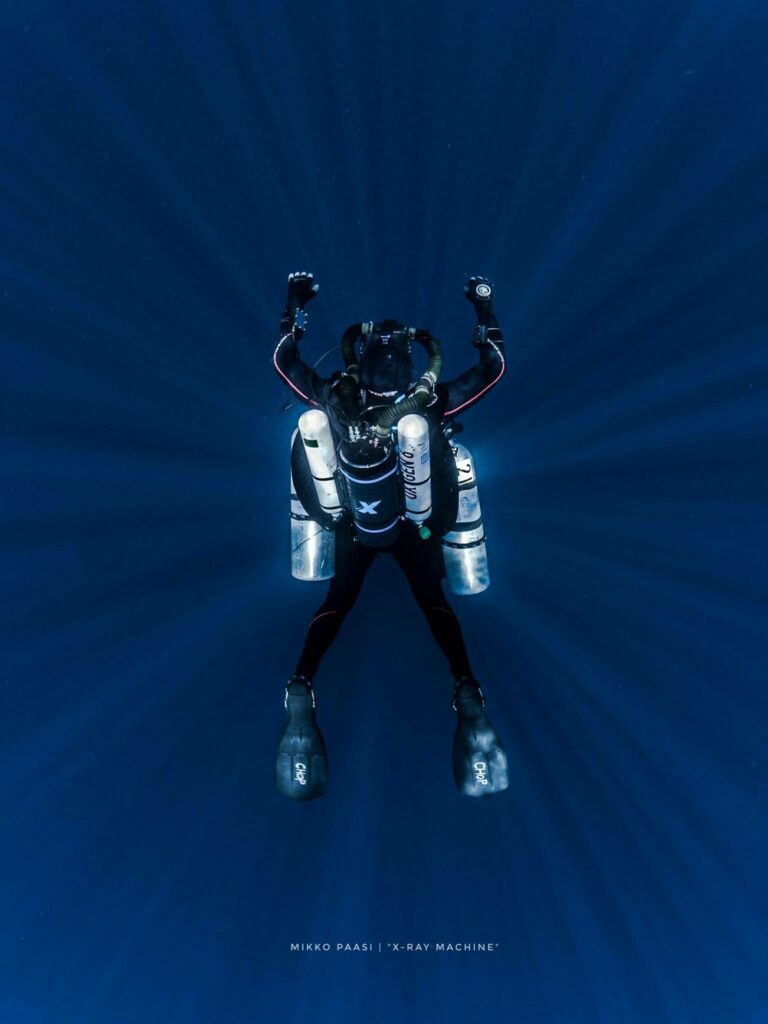Helitrox CCR
This is the second level certification course for divers wishing to utilize a Closed Circuit Rebreather (CCR) for mixed gas diving using a Helitrox Diluent. The objective of the course is to train divers in the benefits, hazards and proper procedures for diving a CCR and to develop basic CCR diving skills, to a maximum of 45 metres/150 feet, using an air/nitrox/helium diluent for formal decompression diving. Students are permitted to utilize a diluent and bailout mix with no greater than a 20% helium content and no less than a 21% oxygen content, and are permitted to use up to 100% oxygen for decompression.

What you can expect to learn
The TDI Diving Rebreathers Student Manual and the manufacturer’s manual are mandatory for use during this course but instructors may use any additional text or materials that they feel help present these topics. The following topics must be covered during the course:
- History and evolution of rebreathers
- Comparison of open circuit, closed circuit and semi closed circuit rebreather systems and the benefits/problems with each
- Practical mechanics of the system
- Assembly and disassembly of the unit
- Layout and design of the unit
- Absorbent canister design and maintenance
- Proper packing of canister, in accordance with manufactures recommendations
- Breathing loop de-contamination procedures
- Manufacturer supported additional items (automatic diluent valve, etc.)
- Gas physiology
- Oxygen toxicity
- Nitrogen absorption
- CO2 toxicity
- Gas consumption
- Electronic and manual systems design and maintenance
- O2 metabolizing calculations
- Fuel cells
- Maintenance
- Replacement
- Manufacturing date
- System electronics functionality and calibration procedures
- Dive tables
- Constant partial pressure of oxygen (PPO2) theory
- Central nervous system (CNS) and awareness of oxygen tracking units (OTU)
- Dive computers
- Mix ajustable
- Constant PO2
- O2 integrated
- Dive planning
- Operational planning
- Gas requirements including bailout scenarios
- Oxygen limitations
- Nitrogen limitations
- Emergency procedures
- Use of B.A.D.D.A.S.S.
- Three H’s problems
- Flooded loop
- Cell warnings
- Battery warnings
- Bailout gas requirements
- Helium considerations
- Helium absorption and elimination
- Advantages of hyperoxic mixes for decompression
- Advantages of helium for bottom gas
- Hypoxia
- HPNS
- Effects on respiration
- Effects as an insulator
- Helium limitations
Course Equipment Requirements
- A complete closed circuit rebreather. Any modifications to the unit must be approved by the manufacturer
- Minimum of 1 CCR dive computer and 1 backup OC/CCR computer for bailout in event of system failure
- Mask, fins and a suitable line-cutting device
- Slate and pencil
- Reel with a minimum of 50 metres / 165 feet of line
- Lift Bag / Delayed Surface Marker Buoy (DSMB) with adequate lift and size for the dive environmentand a backup. Required for open water environments only
- Exposure suit appropriate for the open water environment where training will be conducted
- Access to an oxygen/helium analyzer
- Appropriate weight
- Bailout gas supply cylinder with appropriate capacity of gas for planned dive
Course Prerequisites
- Minimum age 18
- Proof of 50 logged dives
- Minimum certification level of TDI Advanced Nitrox Diver, Deco Procedures Diver or Helitrox diver or equivalent from agencies recognized by TDI
- If the rebreather is a TDI approved sidemount rebreather, the student must hold the TDI Sidemount Diver Certification or equivalent and provide proof of 10 logged sidemount dives
Want to know more?
Ask more questions or schedule any of these courses Email Us.
